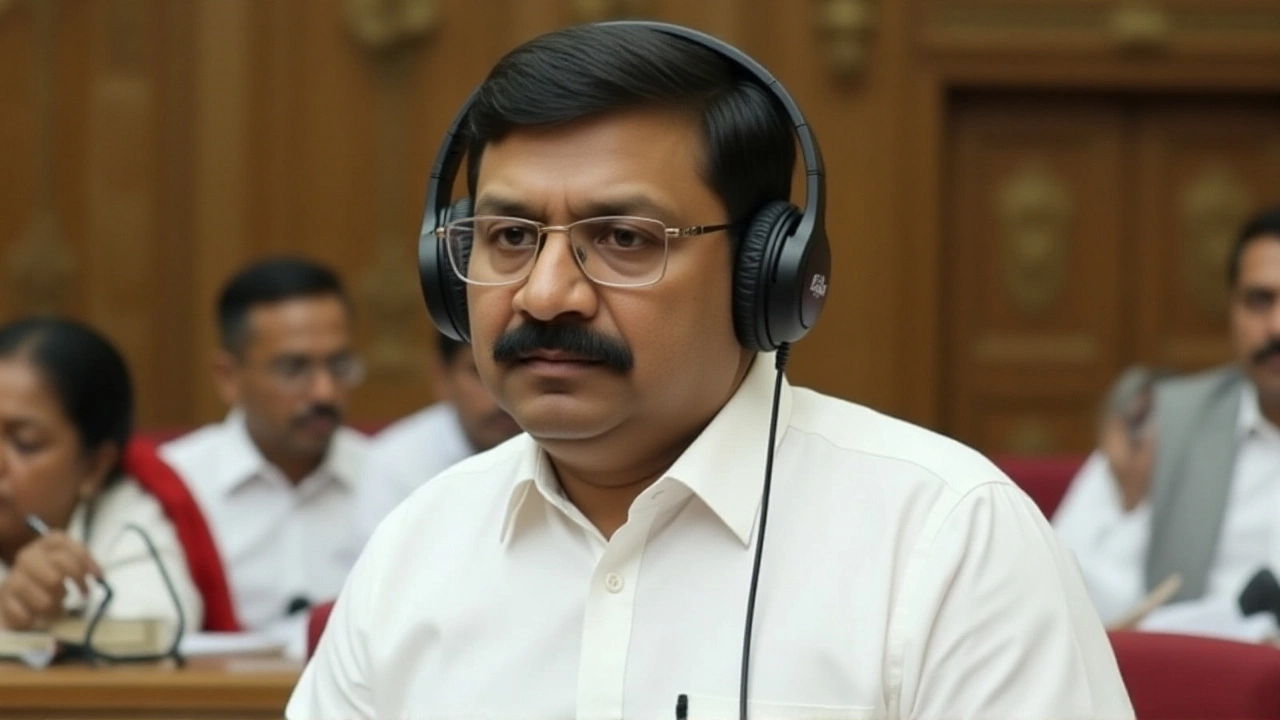When talking about Politics, the activity of making decisions that apply to members of a group. Also known as political affairs, it shapes how societies organize, govern, and respond to challenges. In India, politics touches everything from state development plans to local elections, and the debates often spill into the headlines. One current flashpoint is the state’s long‑term roadmap called Vision 2047, which promises a new economic and social landscape for Uttar Pradesh. Understanding these pieces helps make sense of the heated exchanges you’ll see between leaders like Shivpal Yadav and Brajesh Pathak. The stakes get higher when the same roadmap is used as a campaign promise, because voters expect tangible results within their lifetime. Because politics is a constantly shifting arena, keeping track of who says what, when, and why, can feel like a full‑time job.
Vision 2047, Uttar Pradesh’s 27‑year development blueprint, aims to boost infrastructure, education, and job creation by the year 2047. The plan lays out targets like a 30 % increase in rural electrification, adding 10 new medical colleges, and expanding highway mileage by 5,000 km. Because the roadmap ties funding to political promises, it becomes a bargaining chip in election campaigns. In practice, Vision 2047 influences budget allocations, shapes party manifestos, and drives public debates about feasibility. Critics say the timeline is overly optimistic, while supporters argue it offers a clear vision for growth. For example, the plan earmarks ₹1.5 trillion for renewable energy projects, aiming to double solar capacity by 2030. These targets give analysts a clear benchmark to measure progress and hold the government accountable.
Shivpal Yadav, senior Samajwadi Party leader and former minister has taken a hard line against Vision 2047, labeling it unrealistic and a political stunt. He argues that the promised infrastructure projects lack ground‑level feasibility studies and that the budget projections ignore inflation. His criticism sparked a public showdown in Lucknow, where he demanded the state government revisit the plan’s assumptions. By questioning the roadmap, Shivpal Yadav tries to position his party as the voice of practical governance, and his statements have forced other politicians to clarify their stance on the project. His remarks also resonated with farmer groups who fear that aggressive infrastructure spending could sideline agricultural subsidies. By amplifying these concerns, Shivpal Yadav hopes to rally a coalition of rural voters ahead of the next state elections.
Brajesh Pathak, Deputy Chief Minister of Uttar Pradesh fired back immediately, defending Vision 2047 as a realistic long‑term goal. He highlighted completed milestones such as new highways and upgraded schools, saying they prove the plan’s momentum. Pathak also warned that constant criticism could erode investor confidence and delay essential projects. In his view, the roadmap not only guides development but also signals stability to businesses eyeing the state. Pathak countered by pointing to the recent inauguration of three new logistics hubs, which he says will create thousands of jobs. He also warned that undermining the plan could invite criticism from central ministries that monitor state performance.
Uttar Pradesh, India’s most populous state, is a microcosm of national politics. With over 200 million voters, its elections often set the tone for the country’s political climate. Issues like agrarian distress, urban migration, and caste dynamics intertwine with development agendas such as Vision 2047. Parties craft their messages around these themes, and each leader’s stance can shift voter sentiment dramatically. Because the state’s budget accounts for a sizeable share of the national economy, decisions made in Lucknow ripple outward, affecting everything from central policy to private sector investments. The caste equation, especially the balance between OBC and upper‑caste voters, often determines which party clinches the swing districts. Urban centers like Lucknow and Kanpur are watching the development promises closely, as better infrastructure directly affects their daily commute and business operations.
Below you’ll find a curated set of articles that break down these debates, profile the key players, and unpack the numbers behind the proposals. We cover everything from policy analysis and election forecasts to on‑the‑ground reactions in major cities. Whether you follow party speeches, monitor budget statements, or simply want to know how Vision 2047 may affect daily life, the posts ahead give clear, bite‑sized insights without the jargon. Each article also includes quick takeaways, so you can skim the main points before digging into the full analysis. We’ve linked related pieces where you can compare how other states approach similar long‑term visions, giving you a broader perspective.
Ready to dive deeper? The stories that follow connect the dots between ambition, opposition, and the real‑world impact on Uttar Pradesh’s political landscape. Stay tuned and see how the narrative unfolds across the upcoming weeks.

Shivpal Singh Yadav denounces Uttar Pradesh's Vision 2047 as unrealistic, while Deputy CM Brajesh Pathak defends the plan, sparking a political showdown in Lucknow.